10 Woodworking Tools That Will Change the Game for You
- May 20, 2024
- 0 comment
Starting out in woodworking, you quickly learn the thrill of gathering all the right tools. But sometimes, the tools you find later can make you think, “How did I ever get by without these?” In this article, we’ll explore those standout tools that truly transform your woodworking, making every project smoother and more efficient.
1. Amana Non-Marring Countersink Bit with Depth Stop

Every beginner’s toolkit starts with the basics, and for many, that means screws before the complex dance of joints. Enter the Amana Non-Marring Countersink Bit with a depth stop—an absolute lifesaver. This bit takes the guesswork out of screw installations, ensuring each screw sits flush and perfectly level with your material. It’s more than a tool; it’s your first step toward flawless, impeccable craftsmanship. Ideal for those who value precision right from the start, this tool not only saves time but also elevates the quality of your work from the get-go.
2. Track Saw Over Circular Saw
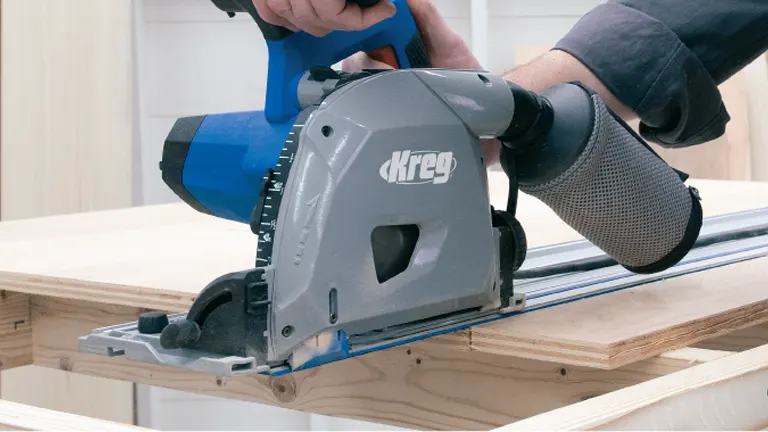
Starting with a circular saw is almost a rite of passage for new woodworkers. Yet, if there’s one upgrade that shifts your work from good to great, it’s switching to a track saw. This tool revolutionizes how you handle plywood, not just by saving time but by enhancing the precision and cleanliness of each cut. The track saw boasts superior dust collection capabilities and eliminates the fuss of offset measurements, ensuring every cut is sharp and on point. For those looking to streamline their woodworking process while improving output quality, the track saw is a clear winner.
| Feature | Circular Saw | Track Saw |
|---|---|---|
| Dust Collection | Poor, with a lot of dust spread | Excellent, with efficient dust capture |
| Accuracy | Requires careful measurement | Highly accurate with track guidance |
| Ease of Use | Requires skill to make straight cuts | Easier to use for straight, precise cuts |
| Setup Time | Longer due to measurement adjustments | Quick and straightforward |
3. Hydraulic Impact Driver
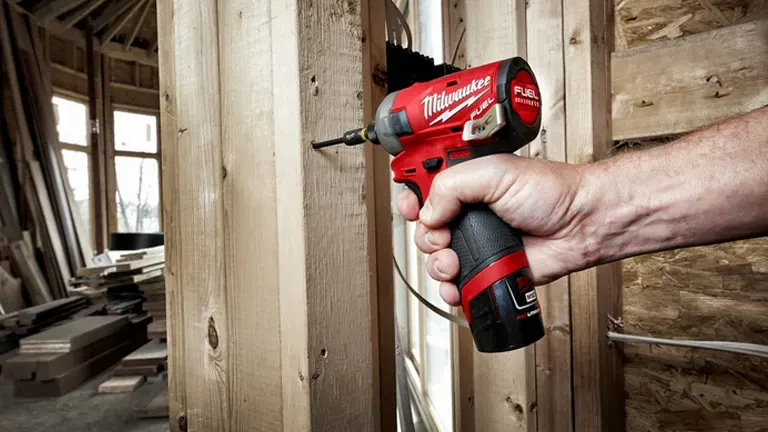
Impact drivers are notorious for their noise, turning peaceful workshops into echo chambers. The hydraulic impact driver comes as a breath of fresh air, offering a quieter, more refined alternative to its traditional counterpart. This tool significantly cuts down on the racket, making indoor projects far more bearable, especially in areas where sound tends to bounce around. If you’re looking to maintain the peace without sacrificing power, the hydraulic impact driver is an essential upgrade for any woodworker’s arsenal.
| Feature | Traditional Impact Driver | Hydraulic Impact Driver |
|---|---|---|
| Noise Level | Very Loud, often over 100 decibels | Quieter, around 94 decibels |
| Indoor Use | Can be uncomfortable due to noise | Much more bearable indoors |
| Power | High | High, with reduced noise |
| User Comfort | Less comfortable due to noise | More comfortable, especially in echo-prone areas |
4. Stationary Miter Station
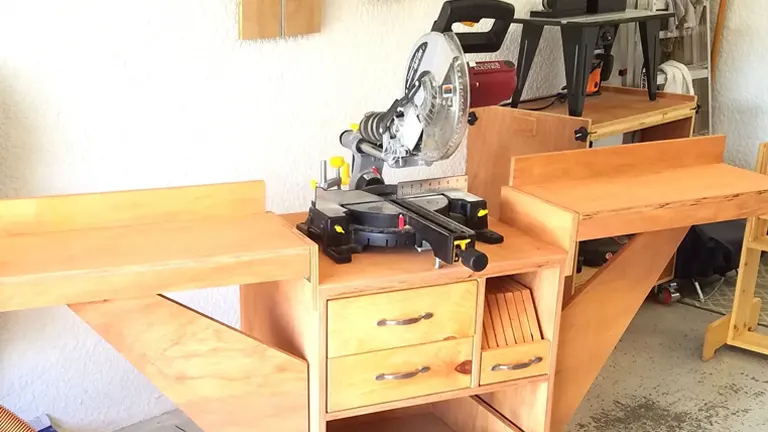
Many woodworkers begin with a simple setup—a piece of MDF balanced on sawhorses. However, the transformation to a stationary miter station can be a game-changer. This upgrade provides solid support, efficient outfeed, and precise measurement stops, ensuring accuracy and stability in your cuts. The stationary miter station is not just a tool, but a cornerstone of a well-equipped workshop. If your space permits, investing in a dedicated miter station significantly enhances productivity and precision, making it a worthy addition to any serious woodworker’s space.
5. Cordless Nailer
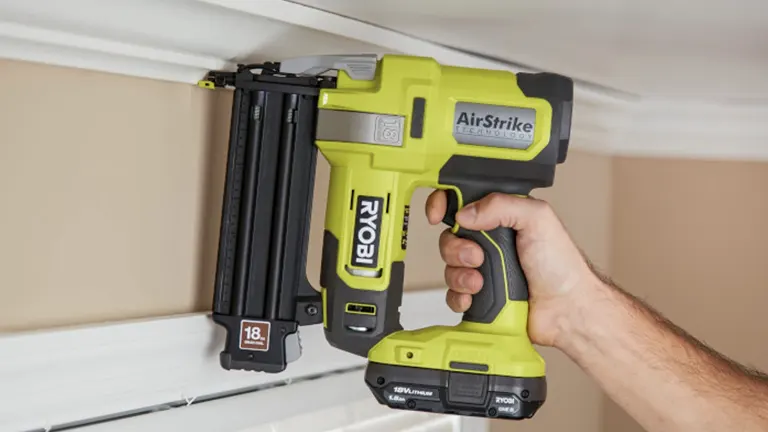
Embracing a cordless nailer means saying goodbye to the cumbersome air compressor and tangled cords. While this tool may carry a bit more weight, the convenience it offers is unmatched. The cordless design frees you from the hassle of dragging hoses around and the constant hum of the compressor, transforming your workspace into a quieter, more efficient environment. For those who prioritize mobility and ease in their projects, the cordless nailer is a definitive upgrade that dramatically simplifies woodworking tasks.
| Feature | Pneumatic Nailer | Cordless Nailer |
|---|---|---|
| Mobility | Limited by air hose | Highly mobile, no hose needed |
| Noise Level | High, due to compressor | Lower, no compressor noise |
| Setup Time | Longer, requires compressor setup | Quick, no setup required |
| Weight | Lighter, as it’s connected to hose | Heavier, but balanced by convenience |
6. Compact Trim Router
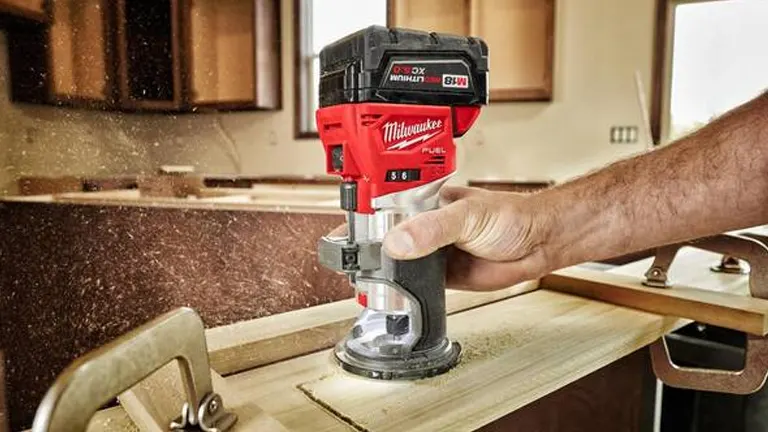
The shift from corded to cordless tools has significantly impacted the usability of compact trim routers. Ideal for quick tasks like rounding over edges, these routers are a staple in any woodworker’s toolkit. The key advantages of a good compact trim router lie in its dust collection system and ergonomic design, which not only minimize cleanup time but also enhance ease of use and handling. This evolution in design ensures that woodworkers can perform precise work more comfortably and efficiently, making the compact trim router an essential tool for both novice and experienced craftsmen.
| Feature | Corded Trim Router | Cordless Trim Router |
|---|---|---|
| Portability | Limited by power cord | Highly portable, no cord restriction |
| Dust Collection | Often basic, not always effective | Advanced, with better containment |
| Ergonomics | Can be cumbersome with the cord | More ergonomic, easier to handle |
| Usage Convenience | Restricted to areas with power outlets | Usable anywhere, more versatile |
7. High-volume, Low-Pressure (HVLP) Paint Sprayer
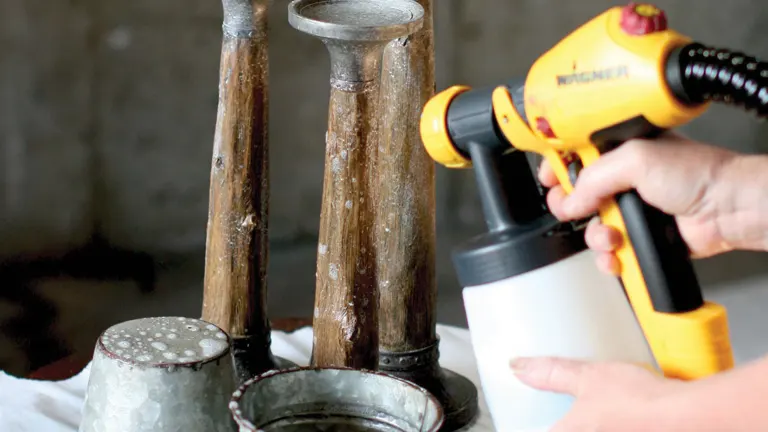
Ditching traditional brushes and rollers for a High-Volume, Low-Pressure (HVLP) paint sprayer is a transformative step for any woodworker looking to optimize painting tasks. This tool dramatically reduces the time spent on painting, thanks to its ability to spray large volumes of paint with minimal overspray and excellent control. HVLP sprayers allow you to adjust the flow rate and spray pattern, ensuring you achieve a smooth, even, and professional finish on every project. Whether you’re painting furniture, cabinets, or detailed woodwork, an HVLP paint sprayer is an invaluable tool that ensures top-quality results with efficiency and speed.
8. Advanced Dust Masks and Respirators
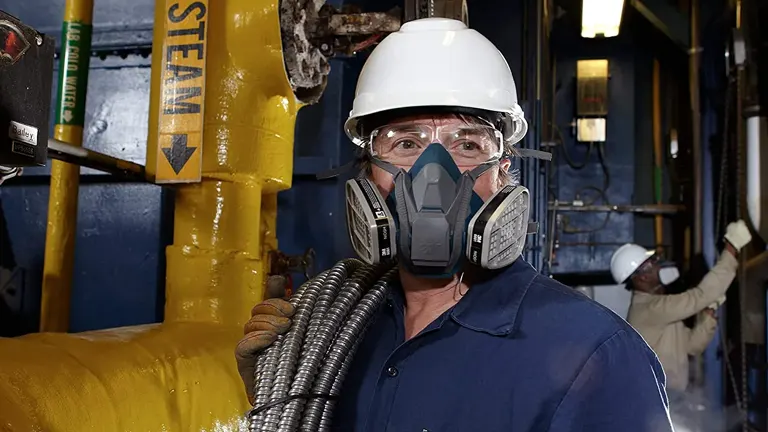
Woodworking involves exposure to sawdust and chemical fumes, particularly from finishes that emit volatile organic compounds (VOCs). To safeguard your health over the long term, investing in high-quality dust masks or full respirators is crucial. These advanced protective gears are designed to filter out harmful particles effectively, ensuring that your lungs are shielded from the fine dust and chemical vapors prevalent in woodworking environments. Whether you’re sanding, painting, or applying finishes, wearing the right respirator can make a significant difference in maintaining good respiratory health and overall well-being in the workshop.
| Feature | Basic Dust Mask | Advanced Dust Mask/Respirator |
|---|---|---|
| Protection Level | Basic, limited to larger particles | High, filters fine dust and VOCs |
| Fit and Comfort | Generic fit, may not seal well | Better fit, adjustable and comfortable |
| Long-term Use | Less suitable for prolonged use | Designed for extended wear |
| Application | General woodworking | Suitable for high-VOC environments |
9. Worksharp Tool Sharpener
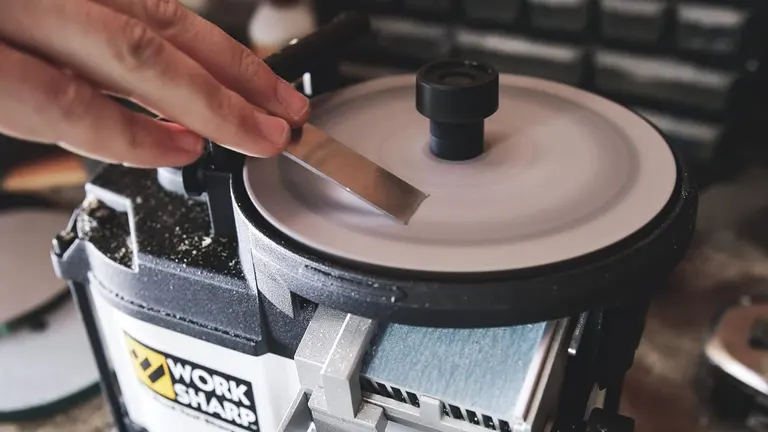
Sharp tools are the backbone of efficient woodworking, and the Worksharp Tool Sharpener stands out as a must-have for keeping your cutting instruments in top form. This innovative device streamlines the sharpening process, turning what can often be a tedious task into a quick and effortless operation. Whether you’re working with chisels, plane blades, or any other sharp-edged tool, the Worksharp ensures they are honed to perfection, ready to slice through wood with precision and ease. It’s an invaluable addition for anyone serious about maintaining optimal performance and longevity of their woodworking tools.
10. Drum Sander
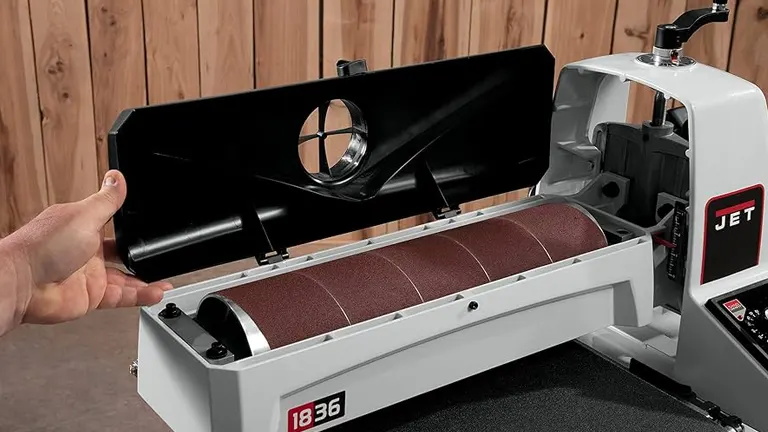
The drum sander represents a significant investment, but its payoff in the woodworking shop is immense. This powerful tool automates the sanding process, making it invaluable for tackling notoriously difficult projects such as ingrain cutting boards and large tabletops. With a drum sander, you can achieve a consistent, smooth finish across expansive surfaces without the physical exertion typically required with manual sanding. Although it comes with a higher price tag, the drum sander’s ability to save time and reduce labor makes it an essential tool for dedicated woodworkers looking to enhance productivity and craftsmanship.
Conclusion
Embracing these transformative tools can significantly enhance your woodworking projects, making every cut cleaner, every finish smoother, and every effort more efficient. Whether you’re just starting out or looking to refine your craft, upgrading your toolkit is a step toward mastering the art of woodworking.
Don’t just take my word for it—experience the difference yourself. I encourage you to try out these tools, see how they fit into your workflow, and share your experiences. Visit your local hardware store or check out online demonstrations to see these game-changers in action. Every step forward is a step towards perfection in your craft. Why wait? Start enhancing your woodworking toolkit today and see just how much easier and enjoyable your projects can become!
FAQs
- What are the top three must-have woodworking tools for beginners?
When starting out in woodworking, three essential tools are the Amana Non-Marring Countersink Bit with Depth Stop, a Track Saw, and a Hydraulic Impact Driver. These tools enhance precision, efficiency, and comfort in your early projects. - How does a track saw differ from a circular saw, and why is it a better investment?
A track saw offers superior dust collection, eliminates the need for offset measurements, and provides more accurate cuts compared to a circular saw. This makes it a better investment for cleaner, more precise woodworking. - What are the benefits of using a hydraulic impact driver in indoor woodworking projects?
A hydraulic impact driver significantly reduces noise levels, making indoor projects more bearable and comfortable, especially in echo-prone areas. It offers the same power as traditional impact drivers with much less noise. - Why is a stationary miter station considered a game-changer in woodworking?
Upgrading to a stationary miter station provides sturdy support, efficient outfeed, and precise measurement stops, transforming your workspace into a more stable and accurate cutting environment. This upgrade is crucial for serious woodworking. - Can investing in a cordless nailer save time in woodworking projects?
Yes, a cordless nailer eliminates the hassle of air compressors and cords, providing greater mobility and reducing setup time. This convenience translates into faster project completion and a more streamlined workflow. - What should I look for in a compact trim router to ensure the best performance?
When choosing a compact trim router, look for features like a good dust collection system, ergonomic design, and cordless capability. These features enhance handling and reduce cleanup time, making your work more efficient. - How does an HVLP paint sprayer improve the finishing process on wood projects?
An HVLP paint sprayer offers precise control over the flow rate and spray pattern, ensuring a smooth, professional finish. It significantly cuts down painting time and provides a more even coat compared to brushes and rollers. - What type of respiratory protection is recommended for woodworking?
For woodworking, it’s recommended to use high-quality dust masks or full respirators, especially when working with finishes that emit volatile organic compounds (VOCs). These protect your lungs from fine dust and harmful fumes. - What makes a drum sander a worthy investment for serious woodworkers?
A drum sander automates the sanding process, making it ideal for challenging projects like ingrain cutting boards and large tabletops. It saves time and effort, providing a consistent, smooth finish across large surfaces. - How often should I sharpen my woodworking tools, and what sharpener is recommended?
Woodworking tools should be sharpened regularly to maintain efficiency and precision. The Worksharp Tool Sharpener is recommended for its ease of use and ability to consistently produce sharp edges on chisels and plane blades.
These tools have the power to transform your woodworking experience, making each project smoother and more enjoyable. Have you tried any of these game-changers? What tools have you found invaluable in your workshop? Share your thoughts and experiences in the comments below. Let’s learn from each other and keep the woodworking community growing! Don’t forget to share this article with your fellow woodworkers. Happy crafting!

David Murray
Forestry AuthorI'm David Murry, a forestry equipment specialist with a focus on chainsaw operation. With over 13 years of experience, I've honed my skills in operating and maintaining a wide range of machinery, from chainsaws to log splitters. My passion for the outdoors and commitment to sustainable forestry drive my work, which emphasizes safety, efficiency, and staying updated with industry advancements. Additionally, I'm dedicated to sharing my expertise and promoting environmental awareness within the forestry community.



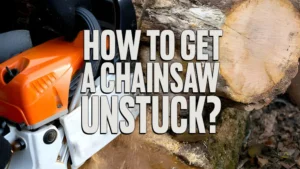









Leave your comment